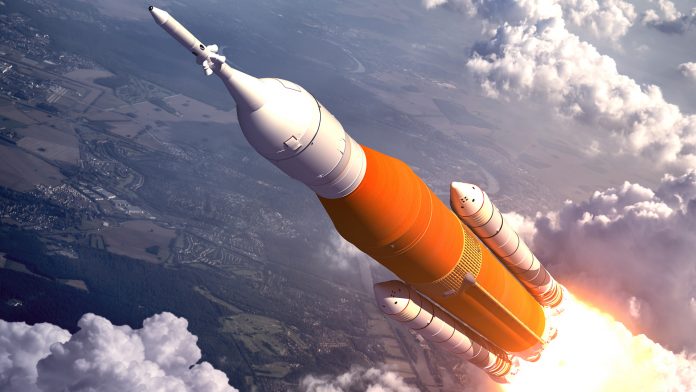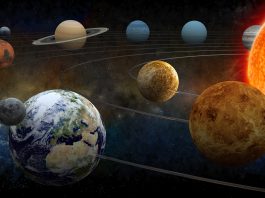The UK Space Agency has welcomed a successful rocket launch this morning, which will be the catalyst for the return of humanity to the Moon.
The NASA-funded Artemis I rocket successfully took off from the Kennedy Space Center in Florida at 6:47am, sending the unscrewed Orion capsule – powered by the European service module that includes Orion’s engines – towards the Moon.
Due to technical issues, the rocket launch had been postponed from 29 August and 3 September. It was then rolled back from the launchpad to avoid Hurricane Ian.
Now the launch has successfully taken place, NASA can begin their Artemis programme, which the UK is part of through the European Space Agency (ESA) and Robotic Exploration Programme. These space programmes will eventually see humans return to the Moon.
ESA’s role in the Artemis programme
ESA has played a key role in the rocket launch and the overall programme. The Agency will help to deliver Orion’s European Service Module, as well as elements of the Moon-orbiting Lunar Gateway.
Libby Jackson, Head of Space Exploration at the UK Space Agency, said: “The launch of the Artemis I mission is a hugely significant moment for the global space community, paving the way for humanity to return to the Moon in the coming years.
“We are proud to be a part of ESA, which is contributing to this mission with the Orion service module, and we look forward to seeing direct UK involvement in the Lunar Gateway, currently in development through ESA’s exploration programme.”
She added: “It’s also exciting to see the rocket launch being tracked in the UK, from Goonhilly Earth Station in Cornwall, marking a major step for our capacity to offer commercial lunar communications from the UK.”
National Space Champion, David Morris MP, stated: “The UK will play a key role in developing the Lunar Gateway. Businesses all across the UK will be involved in building the service module and habitation module of a new space station to orbit the Moon, generating economic benefits and high-skilled jobs demonstrating the UK’s prominence and prestige in the international space programme.
“NASA’s Artemis programme is currently on schedule to land the first woman and the next man on the Moon by 2025 and international partners will collaborate to achieve a sustainable presence on the lunar surface as an envisaged stepping stone to the first human mission to Mars.”
During the Artemis 1 test flight, experts at Goonhilly Earth Station in Cornwall will provide operational support, helping to track the spacecraft and up to six of its ten satellite payloads once in orbit.
Matt Cosby, Chief Engineering Officer at Goonhilly Earth Station, said: “Goonhilly played a role in distributing the Apollo Moon landing footage back in 1969. We’re now taking one step further and contributing to humanity’s return to the Moon.
“Supporting Artemis is a fantastic way to further demonstrate our capabilities as we continue to expand our deep space commercial services.”
How will the rocket launch enable humans to return to the Moon?
The Artemis I rocket launch will test all SLS systems in preparation for the crewed Artemis 2 mission to the Moon.
It will demonstrate Orion’s heatshield in lunar entry conditions, operate systems in the flight environment, and retrieve spacecraft, among other objectives.
The mission is expected to last 25 days, including outbound transit, the rocket’s journey around the Moon, and deployment of satellites. This will be followed by a return transit, before splashdown in the Pacific Ocean in December.
Overall, the unmanned rocket launch will test the safety of all systems and make sure they are suitable for humans. NASA plans to send the first crewed Artemis rocket launch into space in 2024, with the first Artemis astronauts expected to land on the lunar surface in 2025.
About the Artemis programme
The programme is named after the Greek goddess of the Moon, and sister to the God Apollo, which is the namesake of NASA’s first Moon missions. The programme will see the construction of the Lunar Gateway, a new space station where astronauts will be able to live and work.
The building of the Lunar Gateway will include crucial contributions from Thales Alenia Space UK (TAS-UK) and Imperial College London, provided with backing from the UK Space Agency.
The team at Imperial College London is building the magnetometer sensor that will monitor cosmic and solar rays, as part of ESA’s European radiation sensors array. These sensors will assist experiments onboard the Gateway to assess how deep space conditions could affect astronauts and equipment.
Meanwhile, TAS-UK is developing the ESPIRIT refuelling module, which will enable the rocket to safely refuel while in orbit.









